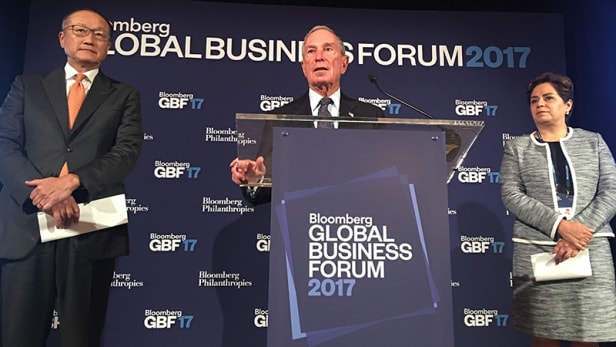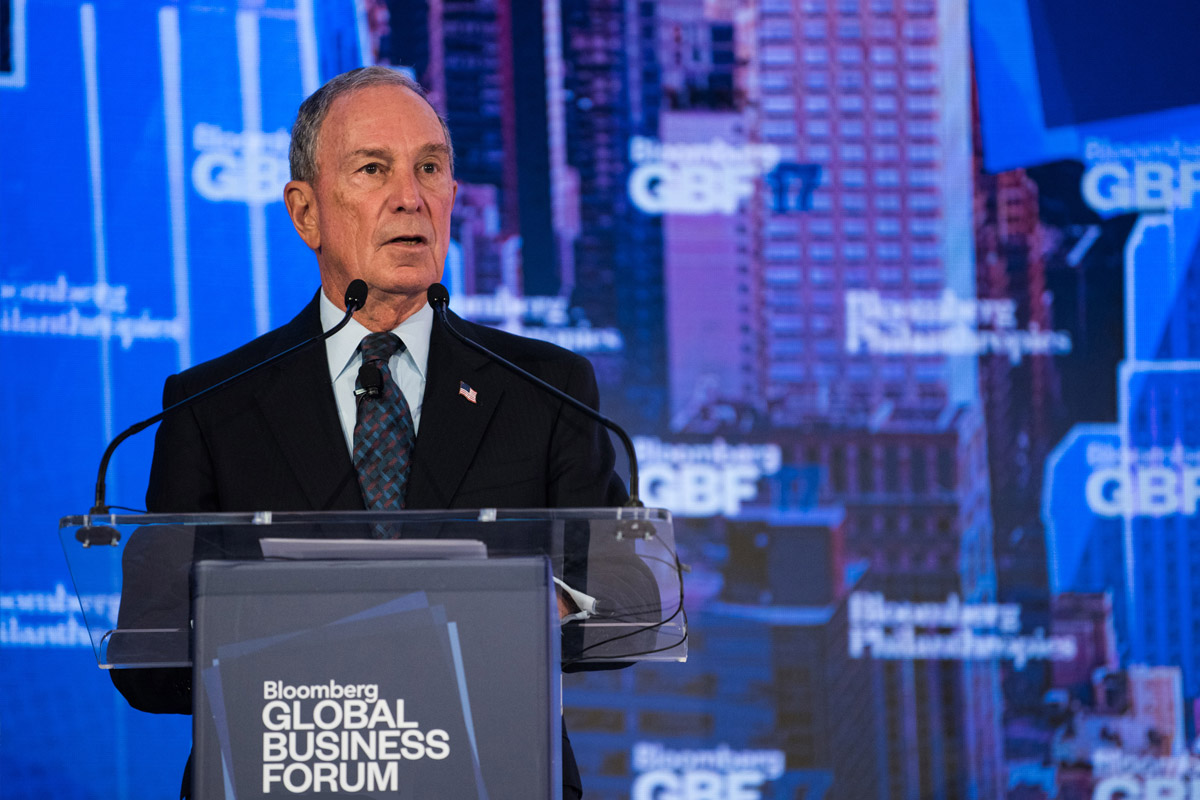
NEW YORK — On Wednesday, the United Nations and the World Bank announced the launch of a jointly managed platform they hope will help create a bridge between private finance and potential investments in climate smart infrastructure.
The new “Invest4Climate” platform does not come with any new funding, but instead looks to combine efforts from multilateral development banks, foundations, national governments, and international organizations to make climate-related investments more attractive to companies and institutions that manage pools of capital. With the variety of financial and policy tools available to them, the World Bank, U.N., and their partners hope they can create matches between projects that would help countries fulfill their Paris agreement pledges and the investment that will be required to finance them.
World Bank President Jim Yong Kim and U.N. climate chief Patricia Espinosa announced the new platform Wednesday at the Bloomberg Global Business Forum, alongside philanthropist and former New York City Mayor Michael Bloomberg.
The World Bank chief noted that over the next 15 years the world will invest more than $90 trillion in infrastructure, an amount greater than “all of the infrastructure investments that have ever been made in human history.”
“Everywhere I go, talking to pension fund managers, to sovereign wealth fund managers, everyone is looking for greater return, but their sense is that investing in [developing countries] in a way that would, in fact, have a great impact on climate change, is too risky,” Kim said.
In launching the new platform, the World Bank and U.N. hope they can help national governments identify potential climate smart projects, work with those countries to reduce investment risk, and then offer those investments to institutions with capital.
“It’s not just low-interest financing, it’s not just concessional financing, it’s political risk insurance, it’s credit enhancement, it’s taking first loss on larger debt instruments,” Kim said. “There are so many ways that we can de-risk, including helping governments change the policies that need to be changed in order to give investors the sense that it’s a safe and, in fact, a high-returning investment.”
Espinosa described the U.N.’s role in co-managing the investment platform in similar terms.
“The United Nations is probably the world’s most important de-risker of investments,” she said.
“We’re not often seen in this way, and we ourselves do not often speak of our work in this way,” she added. “But the fact is that our core business of peace and security, humanitarian and development assistance does, as a spillover, provide systematic de-risking that is needed for long-term investing.”
Finance has been a perennial sticking point in international climate negotiations. Developing countries have sought assurances from developed countries that if they commit to climate smart and low-carbon development plans, they will have access to the finance and technology necessary to achieve them. As the Trump administration has raised doubts the United States will play a major role in contributing public climate finance through vehicles such as the Green Climate Fund, efforts to attract private capital to the cause have gained urgency.
“What happened prior to the December 2015 agreement was that all of the different organizations, the multilateral banks, the bilateral donors, we all got together and said, so what do we think we can do by 2020?” Kim said.
In 2015 the World Bank estimated that up to 28 percent of its total lending would be for climate-related investments by 2020, and that by leveraging additional resources, it would contribute $30 billion in direct and co-financed investments.
“We think we are there now,” Kim said. “It took time for us to do that, but now we are there.”
In response to a question from Devex about why this de-risking platform represents a better approach to marshalling resources for climate investment, Kim described the collective effort already underway among international development agencies.
“There was no platform where the private sector were, where the energy producers were, where countries, the multilateral donors were, where the UN could all sit together and bring their tools to the table,” Kim said.
“I think all of us in the multilateral system don’t know enough about the private sector — what their restrictions, what their needs are. And certainly we believe lots of private sector companies don’t know enough what we can bring,” Kim said.
The Invest4Climate partners will meet again at the World Bank and International Monetary Fund Annual Meetings in October, where the bank will relaunch the platform and bring finance ministers together and invite them to prepare climate investment projects that need financing. They will reconvene at the COP23 climate meeting in Bonn, Germany in November, Kim said.
The bank chief committed that by December 12, when President Macron hosts a climate summit on the second anniversary of the Paris climate agreement, the new initiative will have “real deals on the table,” Kim said.
That will mean that, “unlikely investors have invested in climate change-related projects, and they’ve done so because the United Nations and the World Bank together have come and derisked those investments in a way that will make them both lucrative for the investors and great for the environment,” he said.
Michael Igoe









